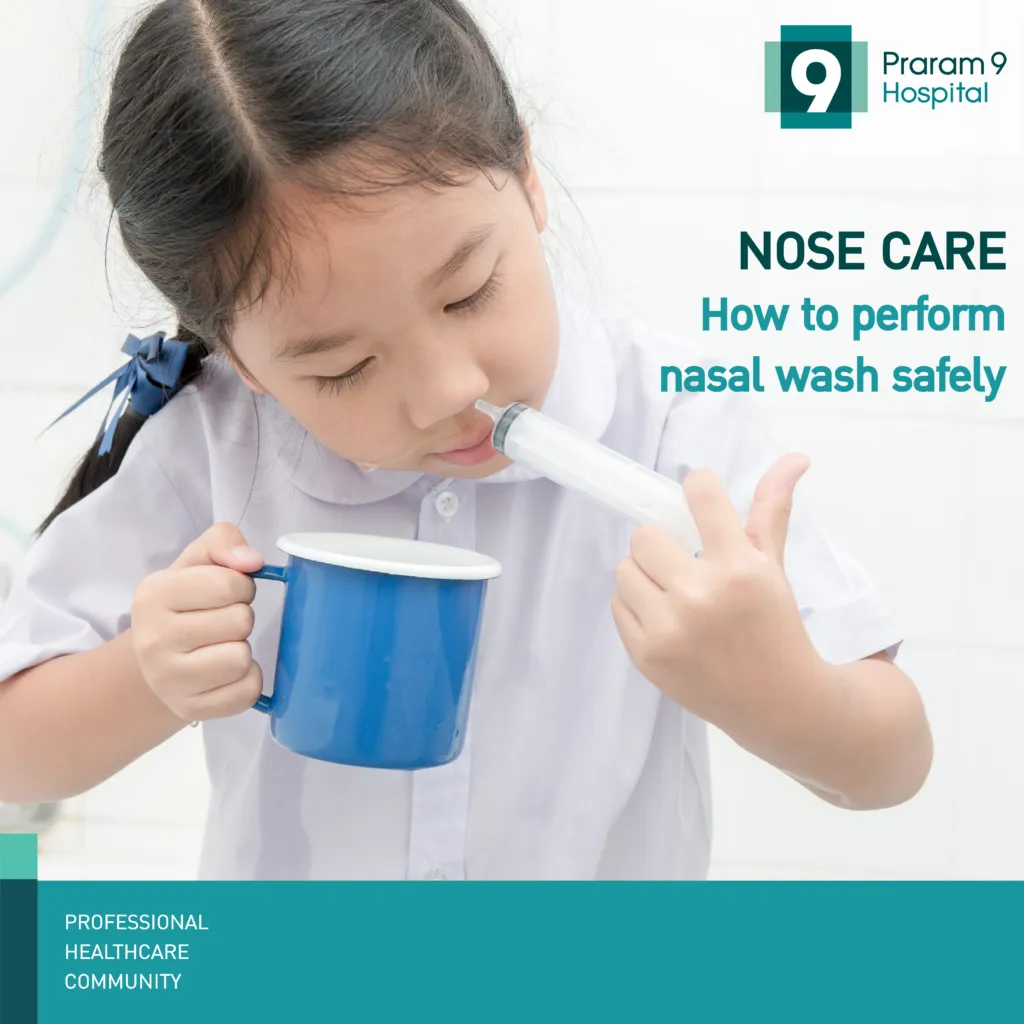Health Articles
Knowledge
Nose care. How to perform nasal wash safely.

Nose care. How to perform nasal wash safely.
What is nasal wash? Many of us are probably unfamiliar with cleaning the internal area of the nose as getting water into our nose cab feel unpleasant and trigger a subconscious body response to eject the water out as the primary function of the nose is for us to breath in oxygen and breath our carbon dioxide from our lung. Therefore, getting water in our nose can be dangerous if perform incorrectly. However, nasal wash is a method of cleaning and clearing the internal area of the nose with 0.9% concentration of saline solution that provide many benefits for a heathier nose.
Anyone can perform nasal wash
Any healthy individual or individual that does not have allergy can and should perform nasal wash as it does provide a lot of benefits such as bacteria control and improvement to the ability to trap and block out unwanted dust and allergy inducing elements, among many other benefits.
How to perform nasal wash safely.
Nasal wash can be performed safely in various way such as tilting the head to the side, down or raise upwards. However, for young children that is unable to hold their breath or blow their nose on their own, you should seek advice from a doctor on how to safely proceed. Here are 5 steps, for adults and children that can hold their breath and blow their nose, as follows:
1. Stand ready in front of your wash basin with clean towel
2. Insert the syringe with 0.9% concentration of saline solution into one of the nostrils.
3. Slowly depress the syringe while holding your breath or saying “Ahhh..” continuously as you are pressing down on the syringe. The saline solution should come out from your mouth or the other nostril.
4. After the syringe has been completely used, blow your nose to clear any remaining saline solution
5. Repeat the process with the other side of the nostril until there are no mucus left.
Precaution for nasal wash. What you should beware of.
In an event that the condition does not improve or get worse after the nasal wash, especially if you feel feverish, headache or have nosebleed, seek advices from the doctor again. After every use, clean your equipment with soap to prevent any bacteria growth and infection.














